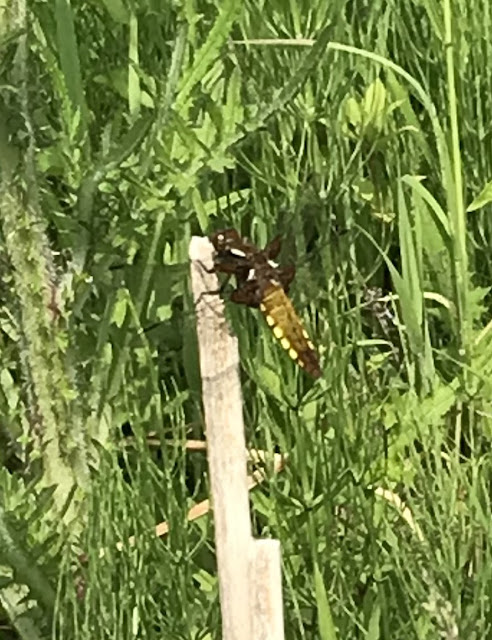In keeping with this season of drought the well of excuses has run completely dry, so your correspondent returned to the fray against Himalayan Balsam this morning. I’d like to say it was to great acclaim, but in truth any acclaim was hard to spot.
11 of us turned out today, which is a good number for this time of year. Here is a selection of that mini-throng, queuing to collect the bags for holding the extracted plants.
Looking like a troop of tea-pickers, we set to with a merry song in our hearts.
Some stayed in the shade, whilst others ventured out into the sunshine
It was at least as hot as it had been for many days, but with the added joy of higher humidity thanks to some overnight rain, the main function of which was to wet the long vegetation through which we had to wade. Getting wet trousers is not the only hazard; HB as we like to call the enemy likes to grow amongst nettles, so a great deal of graceful pirouetting went on. Either we’re a stoical lot, or simply nobody got a face-full of stingers as they bent down to carefully uproot the target plants, as no agonized yells were heard.
The inevitable contest for finding the tallest plant got off to a shaky start.
But it looks more like a tree trunk on this one!
This is quite tall, but…
How about this one?
It’s quite easy to get lost in here!
It’s been noticeable how few insects there seem to be about, but a male orange-tip butterfly was spotted, and it was especially nice to find this female broad-bodied chaser dragonfly.
We did well, with two people needed to carry a full sack…
... but there’s plenty left for next time.
And here’s Team Leader Margaret telling us how much fun that will be.
Here’s her message of thanks
Thank you to the 11 volunteers who turned out on a hot
and humid morning to take part in our continued battle against the Himalayan
Balsam. Some volunteers sensibly stayed in the shade pulling up plants we had
previously missed or had grown in the last two weeks. Others ventured further
into the reed bed in the full glare of the sun. After an hour we had to drag
ourselves away from the cries of just one more! So if anyone would like to join
in we will be back, same time, same place, in two weeks when the plants will be
even easier to spot.
Thank you all so much as we have never managed such a
good clearance.
Margaret (for the team leaders)
A couple of summers ago work began at Pit Common to create an area to be rich in wild flowers. The seeds to get this started were brought to the site in ‘green hay’ from another NWT reserve, and it’s great to see that this summer that work is bearing beautiful fruit. There are many Ox-eye daisies, some yellow rattle and red clover, and no doubt many other species for identification by the more botanically-aware than me.
Elsewhere, a great sighting recently has been this fabulous Bee orchid.
If you wonder how well or badly different bird species are
doing in your locality, the British Trust for Ornithology has launched a new
feature on their website allowing you to see just that. Using data from the Birdtrack
sightings reporting database and the most recent Bird Atlas (a stocktake of all
UK birds conducted during 2007–11), it reveals that since 1970, 11 breeding
bird species have been lost from the Southrepps area. A further 4 species have
declined in abundance since at least 1990, when they first started measuring
abundance in atlases. It’s not all bad news however, as the system also reveals the
breeding species that have actually increased in abundance locally.
It's well worth a look, at data.bto.org/doorstep-birds/

.jpg)


.jpg)

.jpg)










.jpg)
.jpg)
.jpg)

.jpg)




.jpg)